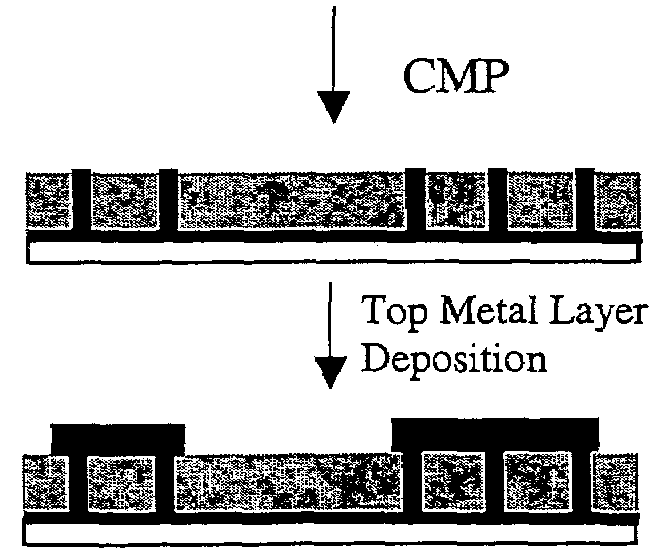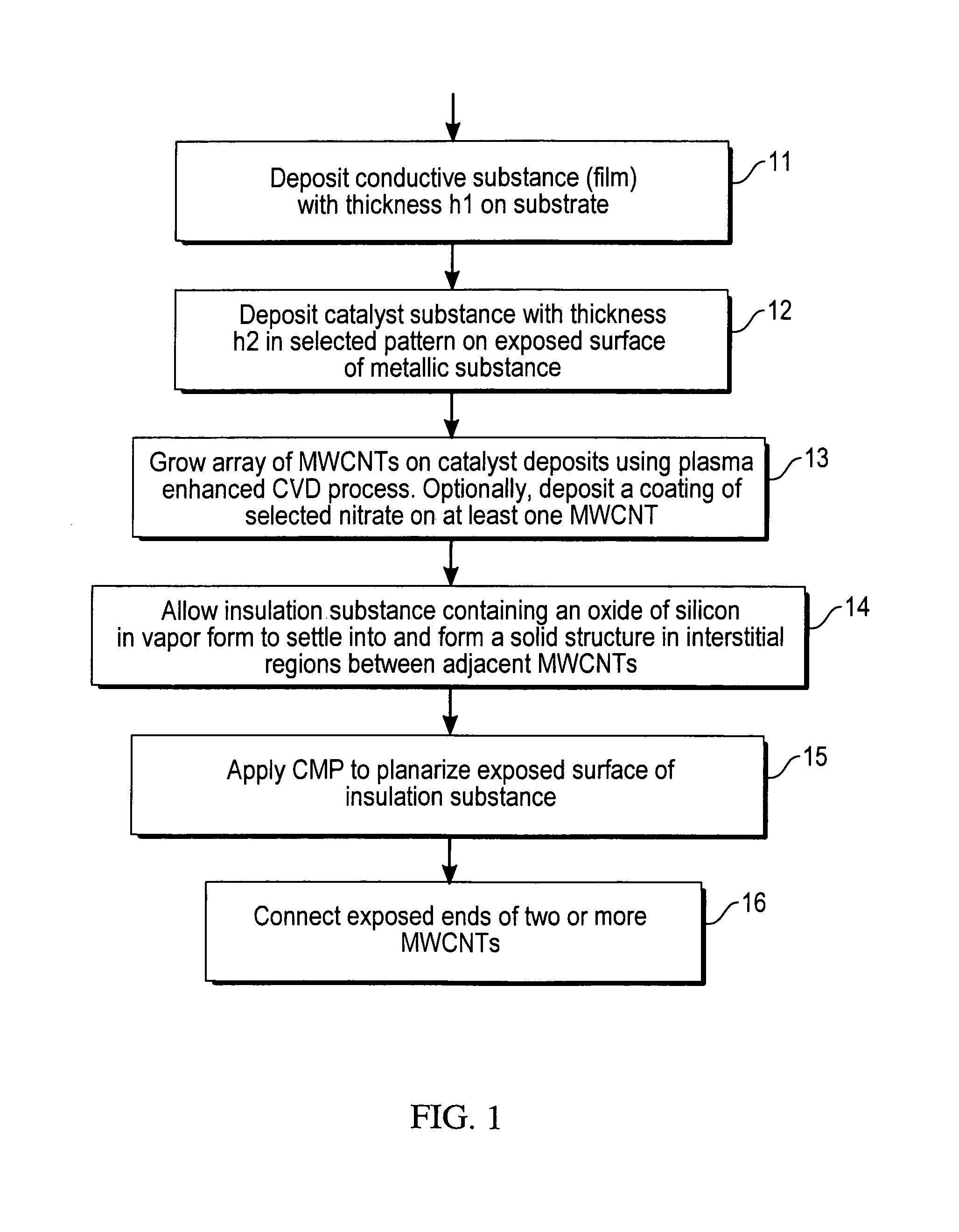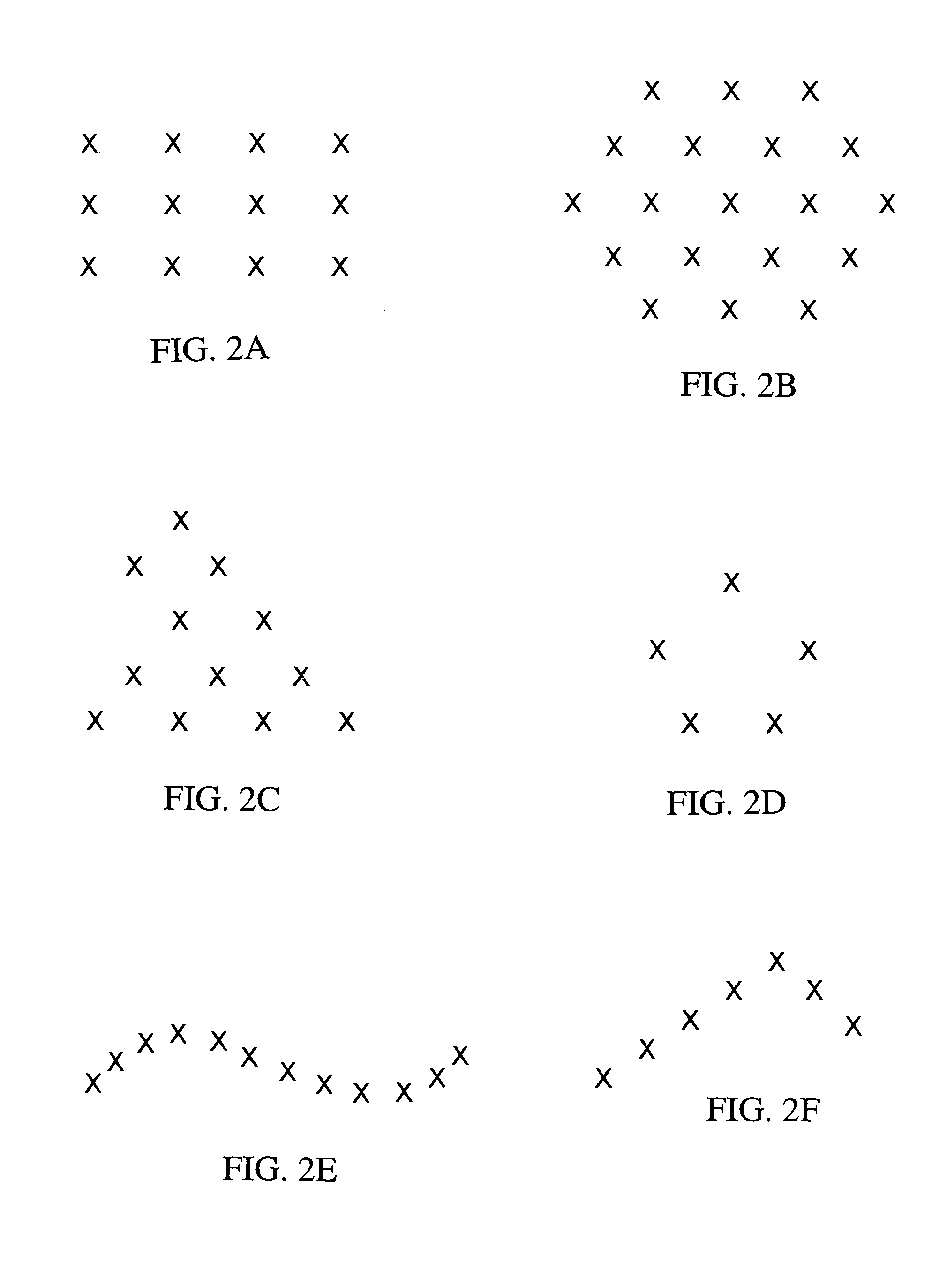Carbon nanotube interconnect
- Summary
- Abstract
- Description
- Claims
- Application Information
AI Technical Summary
Benefits of technology
Problems solved by technology
Method used
Image
Examples
Embodiment Construction
[0018]FIG. 1 is a flow chart of a procedure for fabricating an electrical interconnect according to one embodiment of the invention. In step 11, a selected conductive substance, having a conductive substance (film) first selected thickness h1 in a range 1 nm≦h1≦2 μm, or greater if desired, is deposited on a selected substrate. The substrate material may include a silicon oxide, SiOx, a selected nitride, SiyNz, or another suitable insulating material, of thickness 200–500 nm or greater, on an Si wafer. The conductive substance may be Al, Mo, Cr, Ti, Ta, Pt, Ir or doped Si. A careful choice of the conductive substance (e.g., Mo, Cr or Ti) will eliminate or suppress diffusion of carbon within or through the conductive substance layer.
[0019]In step 12, a selected catalyst substance, such as Ni, Fe or Co, is deposited in a selected pattern, with a second thickness h2 in a range 1 nm≦h2≦30 nm, or higher if desired, on an exposed surface of the conductive substance. The selected pattern or...
PUM
 Login to View More
Login to View More Abstract
Description
Claims
Application Information
 Login to View More
Login to View More - R&D
- Intellectual Property
- Life Sciences
- Materials
- Tech Scout
- Unparalleled Data Quality
- Higher Quality Content
- 60% Fewer Hallucinations
Browse by: Latest US Patents, China's latest patents, Technical Efficacy Thesaurus, Application Domain, Technology Topic, Popular Technical Reports.
© 2025 PatSnap. All rights reserved.Legal|Privacy policy|Modern Slavery Act Transparency Statement|Sitemap|About US| Contact US: help@patsnap.com



